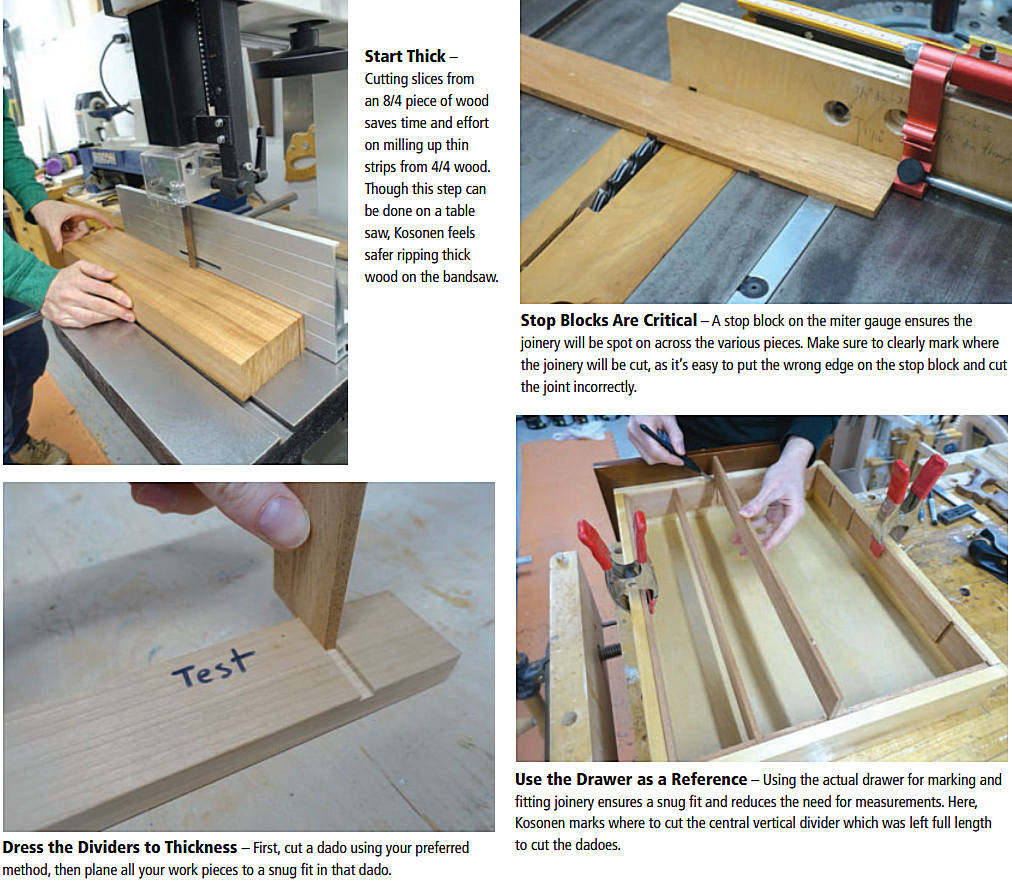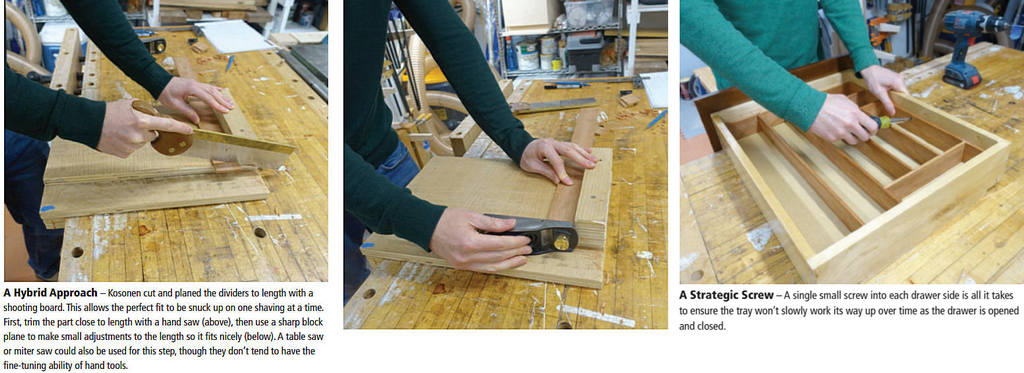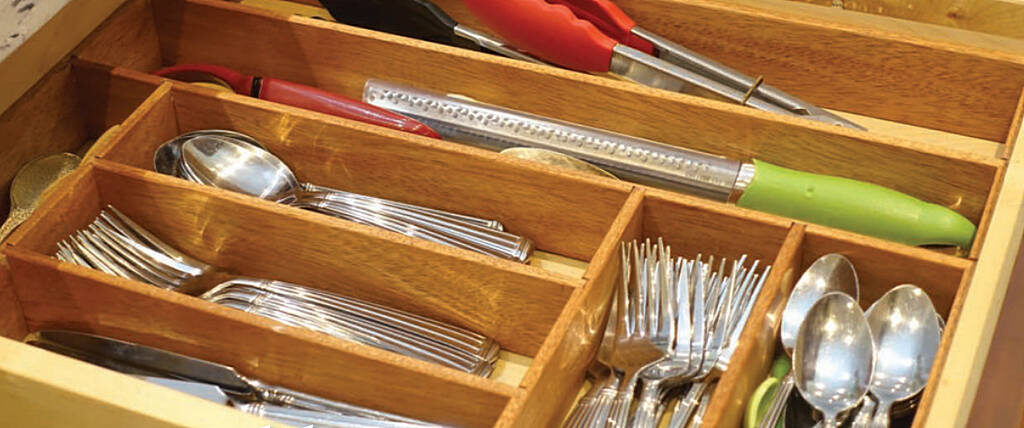Every kitchen drawer is unique, as is the silverware that goes into it. Don’t settle for a standard silverware organizer when a custom one is easy to make, prevents messy drawers and looks great.
BY CRAIG KOSONEN
This project is a good way to organize and clean up some of your kitchen drawers. Factory silverware organizers are often too small for standard drawers and tend to shift around. They’re also quite basic so you’re out of luck if you want something out of the ordinary.
Design and wood preparation
The design of this new silverware organizer is very much modelled after my existing, ill-fitting tray. I’ve added a couple extra dividers along the edge to store larger tongs and serving spoons.
The design is easy enough to modify to change the overall size, or to add or remove compartments. Make sure to design your organizer to maximize your drawers and utensils.
One thing to consider before starting is whether or not a bottom is required. In my case, I opted for no bottom so my silverware will sit directly on the drawer bottom. If you decide you need a bottom, some sort of sheet good, such as Baltic birch plywood or melamine, would be best. If you do opt for solid wood, remember a wide solid wood bottom requires room for expansion, so that will need to be taken into account.
All the parts for the organizer are 1/4″ thick. If 4/4 wood is used, there will be a lot of resawing and planing, which will leave a lot of waste and take time. To avoid that, use the thickest piece of wood you can find and rip the 1 /4″ thick pieces from that. A piece of 8/4 lumber will yield a tray depth of close to 2″ which is enough for most silverware collections. Cut pieces oversize on the bandsaw, about 5/16″ thick, running the 8/4 piece over the jointer after each cut, so each piece left is 5/16″ with one sawn face and one jointed face. Cut a few extra pieces just in case.

Dado joinery
Dado joints will help keep this tray together, so cut a test dado into a scrap piece of wood. This test dado can be used to size your lengths to finished thickness. I use a dado stack in my table saw for dadoes, but other methods such as a router table will work fine. Plane all the pieces, testing the workpiece in the test dado after each pass through the planer, sneaking up on a good fit. At this stage aim for a tight fit, as a small amount of material will be removed when the pieces are prepped for finish.
Joinery and assembly
The joinery is cut in a hybrid approach; dadoes on the table saw with all the dividers cut and fit by hand. This saves on the up-front planning and minimizes the measuring which can lead to errors.
Start with the full-length vertical dividers that run front to back. Using the actual drawer for reference, trim these pieces so they’re a snug fit from front to back. The finished central pieces will be a bit shorter at the end of the project, as they sit in dadoes, but they should be left the full drawer depth at this stage to simplify cutting the joinery. Mark out where dadoes should be cut to accommodate horizontal dividers. Cut all the dadoes using a miter gauge (or crosscut sled) and a stop block. The stop block is critical, as this will make sure all your dadoes are lined up. Finally, use the dado setup to cut rabbets in the ends of the border pieces.
A similar process is followed with the full-length horizontal dividers. Using the actual drawer and the vertical borders, trim them to size so they fit in the dadoes or rabbets. Mark the joinery, then cut it using stop blocks. The vertical dividers that were left full length in the previous step can be marked and cut to fit in the horizontal borders that are now complete.
This process continues to repeat itself until all the dadoes have been cut and dividers fit. If your design has spots where dividers aren’t of equal length, as long as the same reference edge is against the stop block the dadoes will be cut correctly.
A note on trimming the dividers to length. I use a hand saw to trim slightly oversize, check the fit, then finesse the fit on a shooting board with a hand plane. This could be done with a miter saw or other power tool.

Finish
Once the joinery is complete, sand or scrape all the dividers smooth. Pre-finish all the pieces with an oil finish. Oil is a good choice because it’s easily repaired and there is no worry that the finish will flake off onto the silverware.
The glue-up is done in the drawer itself. Because all the joinery was cut snug within the drawer, the drawer acts as a natural clamp. Not much glue is needed because the joinery should be snug and you don’t want to get squeeze-out on the drawer. These joints are all end-grain to long grain, so to give it a bit of extra strength put a very thin layer of glue on all the end-grain parts and let it sit about a minute before putting glue in the dadoes and assembling. This will allow the end grain to soak up a bit of the glue before final assembly.
Once the glue has dried, drill, countersink and install a 1/2″ screw into each side of the drawer. This will ensure that the organizer stays in place and doesn’t work its way up over time as the drawer is operated.
This isn’t the most complex or arduous project, but it’s one you’ll use more than just about any other finished project in your house. Use a nice wood, take care to design the right layout and spend the time to create accurate joints. You’ll thank yourself every day.

